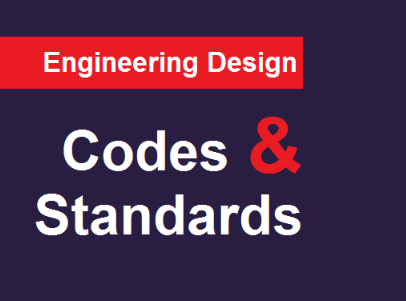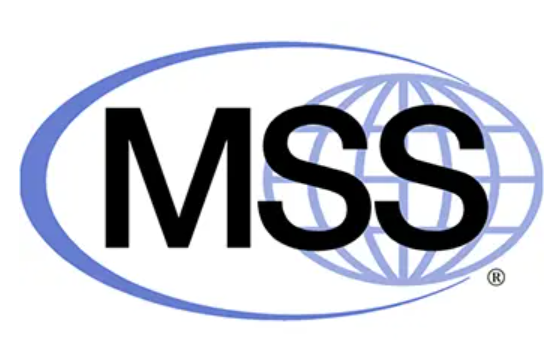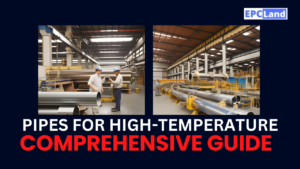

1. What does MSS SP-75 primarily govern?
Choose the correct statement regarding the scope of MSS SP-75.
Explanation: MSS SP-75 primarily governs high-strength, wrought, butt-welding fittings made of carbon and low-alloy steel.
2. How are MSS SP-75 fittings classified based on material strength?
Select the correct statement regarding the classification of MSS SP-75 fittings based on minimum yield strength.
Explanation: MSS SP-75 fittings are classified based on minimum yield strength, denoted by grades like WPHY-42, 46, 52, 56, 60, 65, and 70.
3. What types of fittings does MSS SP-75 cover?
Choose the correct statement regarding the types of fittings covered by MSS SP-75.
Explanation: MSS SP-75 covers a variety of fittings including elbows, tees, caps, and reducers.
4. Why is heat treatment required for MSS SP-75 fittings?
Choose the correct statement regarding the necessity of heat treatment for MSS SP-75 fittings.
Explanation: Heat treatment for MSS SP-75 fittings is required to ensure integrity and compliance with specific ASME Boiler and Pressure Vessel Code guidelines.
5. What does MSS SP-75 specify regarding dimensions and tolerances?
Choose the correct statement regarding the dimensions and tolerances specified by MSS SP-75.
Explanation: MSS SP-75 specifies dimensions and tolerances for fittings ranging from NPS 16 to NPS 60.
6. Which statement accurately describes the role of MSS SP-75 in piping systems?
Choose the correct statement regarding the role of MSS SP-75 in piping systems.
Explanation: MSS SP-75 plays a vital role in ensuring the reliability and safety of high-pressure piping systems through comprehensive regulation of materials, fabrication, testing, and more.
7. What does MSS SP-75 classify fittings based on?
Choose the correct statement regarding the classification of MSS SP-75 fittings.
Explanation: MSS SP-75 classifies fittings based on material composition, specifically the minimum yield strength denoted by grades such as WPHY-42, 46, 52, 56, 60, 65, and 70.
25+ Relevant topics on Codes & Standards
Short Article on Codes & Standards


Diving into MSS SP-75: High-Strength, Wrought, Butt-Welding Fittings
The intricate world of piping systems relies on a multitude of specialized components, one of which is the humble butt-welding fitting. For applications demanding high-pressure gas and oil transmission and distribution, specific standards ensure the reliability and safety of these crucial parts. Enter MSS SP-75: a comprehensive standard governing factory-made, high-strength, wrought, butt-welding fittings.
Delving into the Standard:
- Scope:
- Covers seamless and electric welded carbon and low-alloy steel fittings.
- Applies to pipelines, compressor stations, metering and regulating stations, and mains.
- Governs dimensions, tolerances, ratings, testing, materials, and more, for fittings NPS 60 and smaller.
- Material Matters:
- MSS SP-75 classifies fittings based on minimum yield strength: WPHY-42, 46, 52, 56, 60, 65, and 70.
- Higher WPHY grades are preferred for high-pressure applications.
- Material options include blooms, billets, slabs, pipes, and plates.
- Welding is strictly regulated by ASME and API specifications.
- Fabrication and Finish:
- Forging, hammering, pressing, welding, and combinations are employed in their creation.
- Finished products must be free of harmful defects or weld repairs.
- Certain customers may request machined or ground surfaces for superior finish.
- Chemical Composition:
- A specific table outlines the maximum allowable percentage of key elements like carbon, manganese, phosphorus, and sulfur.
- Mechanical Properties:
- Another table showcases the minimum yield and tensile strengths, as well as elongation percentages, for each WPHY class.
- Higher classes exhibit superior strength and resilience.
- Heat Treatment:
- All fittings require heat treatment following specific ASME Boiler and Pressure Vessel Code guidelines.
- Annealing, normalizing, and quenching/tempering are among the employed techniques.
- Quality Control:
- A variety of tests and examinations, including hydrostatic testing, tensile tests, PMI, Charpy tests, and NDE methods, ensure the fittings’ integrity and compliance with the standard.
- Dimensions and Tolerances:
- MSS SP-75 specifies dimensions and tolerances for fittings NPS 16 to NPS 60.
- Smaller sizes adhere to ASME B 16.9.
Applications and Alternatives:
- MSS SP-75 fittings are ideal for high-pressure oil and gas pipelines.
- For medium-high pressure pipelines, ASTM A234 WPB/WPC may be preferred.
- Available fitting types include elbows, tees, caps, and reducers.
Conclusion:
MSS SP-75 plays a vital role in safeguarding the integrity and performance of high-pressure piping systems. By comprehensively regulating materials, fabrication, testing, and other critical aspects, it ensures the reliability and safety of these essential components. Whether traversing vast oil fields or powering industrial hubs, MSS SP-75 fittings stand as silent guardians, quietly enabling the intricate flow of energy that fuels our world.
Table of Contents
Don’t miss the Course on Effective Isometrics Management: Check Now
Enrollment Link
Recommended courses (Published on EPCLand)
- Complete Course on Piping Engineering
- Basics of Piping Engineering
- Piping Layout Engineering
- Piping Material Engineering
- Piping Stress Analysis
- Material Requisitions
- Piping Material Specifications
- Valve Material Specifications
- Plant Design & Layouts-OISD 118
- Isometric Management
Library of Technical Articles
Don’t miss out the collection of 15+ articles on following topics:
- Basics of Oil and Gas Industry
- Valves
- Testing
- Tank
- Piping Bulk Items
- Pipe
- Metallurgy
- Piping Materials
- Layout
- Instrumentation
- Heat Exchanger
- Type of Contracts
- Codes and Standards
- ASTM Standards
- Articles on Piping Specialty Items
Video details of Complete Course on Piping Engineering
Why Enroll in the EPCLand
Proven Track Record– PTR
Activities & Achievements before launching EPCLand
- Published more than 50+ short courses
- 3000+ Enrolments
- More than 3,500,00 Minutes of watch hours in the last 2 years
- 4000+ Students in 100+ Countries
- Rating of 4+ out of 5
- 1000+ YouTube Videos
- 8K+ Subscribers
What Students will Learn
- Codes & Standards of the Energy Sector
- Piping Material Engineering
- Piping Layout Engineering
- Stress Analysis
Interesting facts
- All the published courses have been developed by Industry Experts with more than 2 decades of experience
- Content is based on Practical experience and real-time problems.
- Content is designed and organized in such a manner that it can be easily grabbed.
- Complete website, Blogs and Quiz sections are Planned, Designed and published by myself (About me: Atul Singla)
- Complete flexibility of Time & Location, Students can access the content from anywhere & anytime
- Moreover, once enrolled, the content can be access as many times as you want, which helps in understand the fundamentals in a better way.
Conclusion
In conclusion, our courses are meticulously crafted by industry experts with over two decades of hands-on experience. The content is rooted in practical knowledge, addressing real-time problems. The material is thoughtfully designed and organized for easy comprehension. Every aspect, from the website to blogs and quizzes, has been planned, designed, and executed by Atul Singla, ensuring a comprehensive and seamless learning experience. With the flexibility of accessing the content at any time and from any location, students have the freedom to learn on their terms. Furthermore, enrollment grants unlimited access, allowing learners to revisit the material as often as needed, fostering a deep understanding of the fundamentals.



